InterviewsMarine Plastic Art: The Steve McPherson Interview
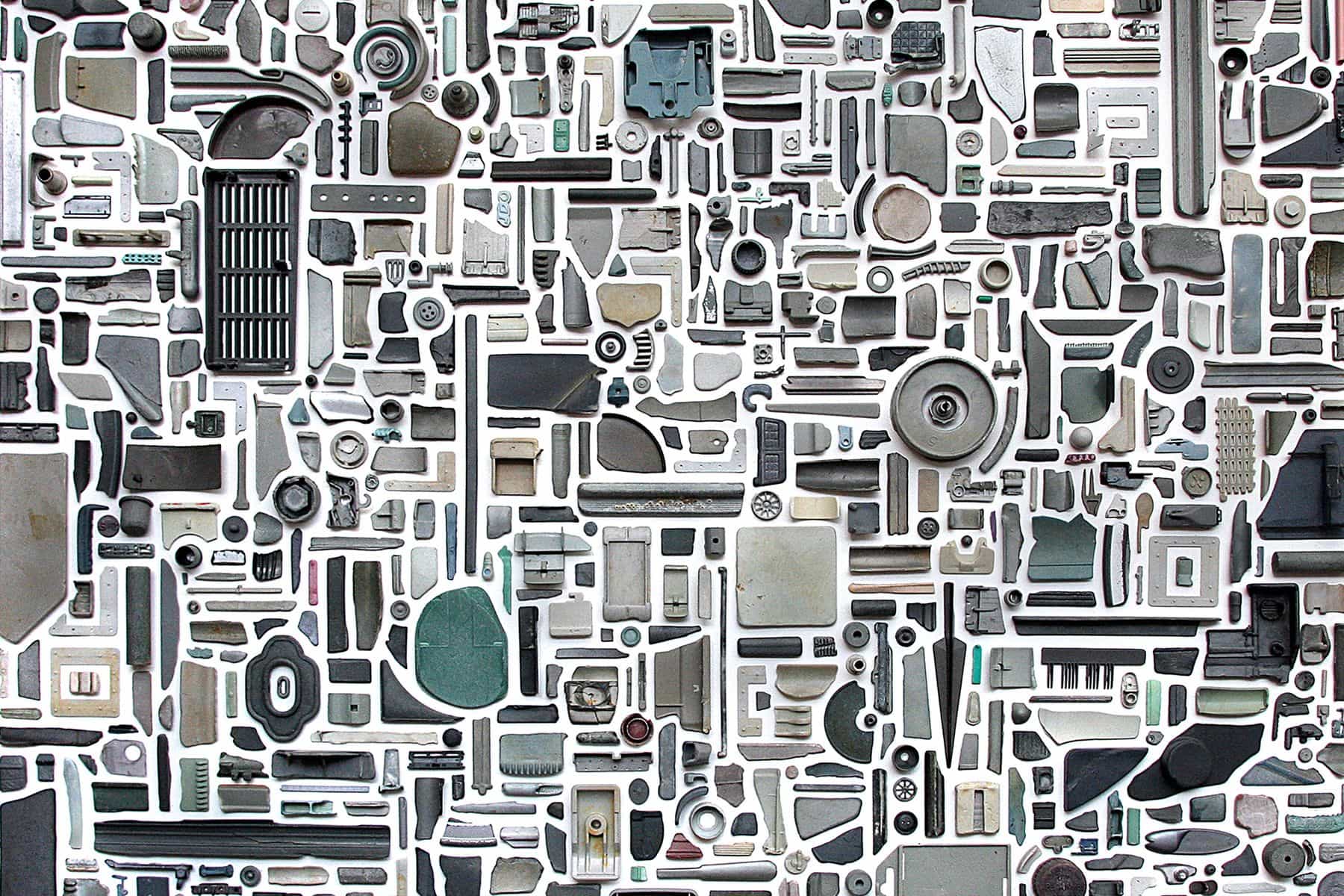
“Art is a way of life, it’s an identity. In my waking and dreaming, I make, research, collect materials and exhibit – it encompasses most of my thinking.”
The words of Steve McPherson, a non-surfing artist hailing from the wave-less North Kent coast of England, can resonate with many of us wave-craving creatures. Surfing is often translated as “the art of riding waves”, a way of life, and for many, an identity. In a surfer’s waking and dreaming, they make the perfect wave or the perfect ride, research the best spots and conditions, collect surfing paraphernalia and knowledge, and exhibit their skills and passion through movements on the water’s surface. It probably does encompass most of their thinking.
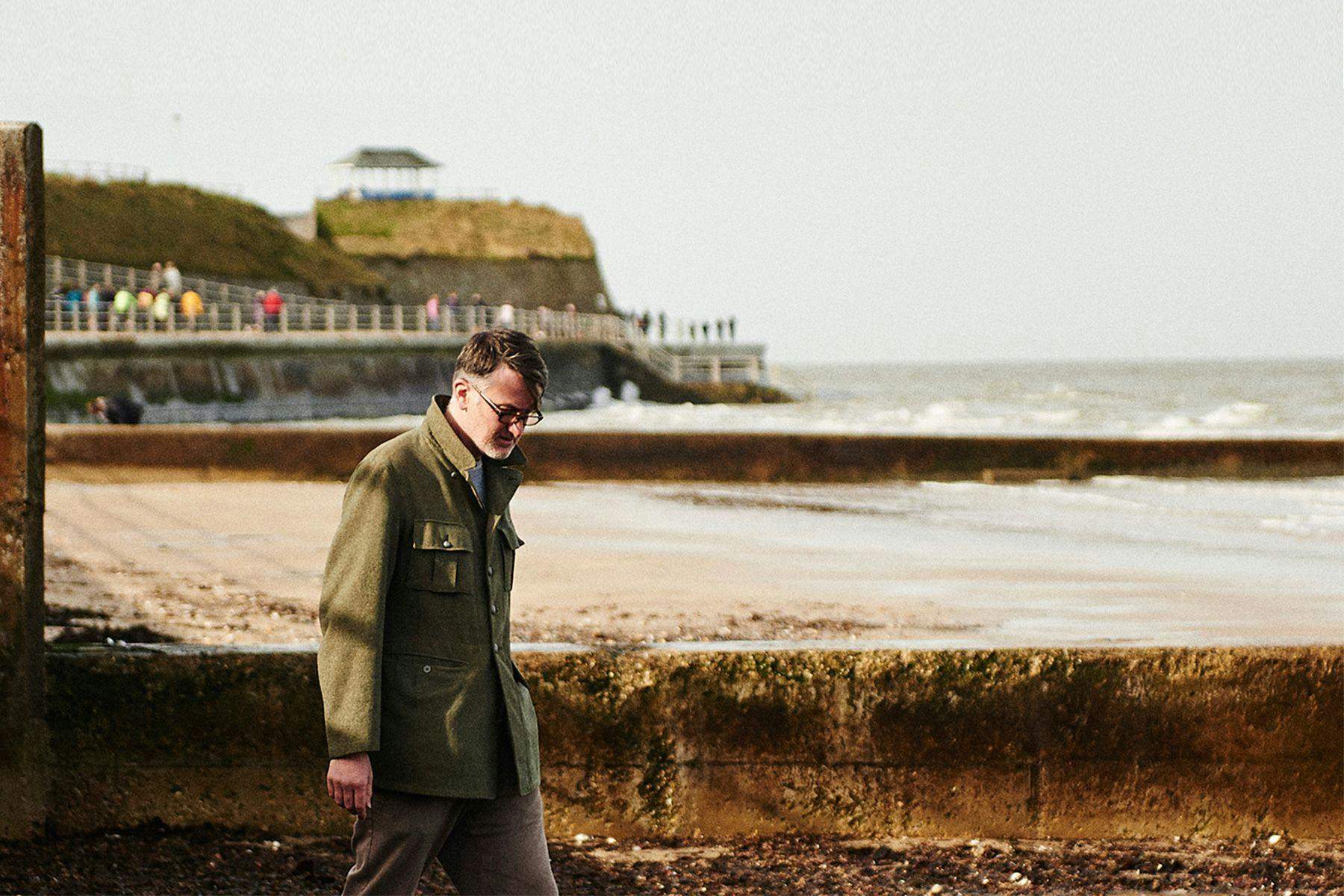
Deeply influenced by his grandfather – a hobbyist artist with a knack for realist paintings whose colour blindness impeded him in become a RAF pilot during WWII – Steve developed three fundamental traits: a love for all-things-aeroplane, a love of art, and colour blindness. Unable to pursue his dreams of flying fighter jets, Steve redirected his life course toward his other dream – to be an artist. He attained his first degree in Fine Art at what was then Kent Institute of Art and Design, Canterbury, and subsequently a Masters in Sculpture at Winchester School of Art. A few years after finishing his MA, he returned to Canterbury to start a career as a part time lecturer of art; a path he trod until 2016, when he resigned to take the plunge into being a full-time artist.
Despite the influence of his grandfather’s realistic paintings, much of Steve’s work breathes abstraction – a feature which he attributes to a school trip taken at age 4 to an old stately home turned museum, where hand-typed labels shared the space with full-sized taxidermy dioramas with all sorts of animals and insects from Victorian-era Africa.
“I pulled through drawings of butterflies and beetles and wandered amongst ethnographic cabinets of curiosities of no doubt now-modernized tribal people mixed with local ancient archaeology artefacts and fossils scavenged from cliff tops and chalk reefs. This one trip I feel saturated my psyche so much that I can trace most of my work back to this influence.”
Steve’s colour blindness and abstract tendencies have led him to structure a rather metaphysical framework to his pieces, plunging deep into constructs of perception and history, provoking thought and questioning so-called truths.
“The very reason I was tested for colour blindness was due to an artistic ‘accident’ at age eight. I had coloured in for a school project – a marine scene no less – of a lighthouse on a cliff top, the waves splashing on the rocky shore. Instead of green for my grass clifftop I had, unbeknown to me, used orange and was graded by my teacher unfairly.
Being told that what you perceive of the world is not real, untrue, wrong, at age eight quite affected me, and I believe altered my psyche. If what I saw every day was wrong, then what other untruths did I experience? I became a child with more questions than others, and in turn was suspicious of the answers. I suppose I started to grow into a kind of model agnosticism; a world of philosophical and perceptual uncertainties, something that has influenced much of my work as an artist.”
One of Steve’s most acclaimed projects, Marine Plastic, is a tangible example of the way in which he merges his own perceptions with materials found in the “real world”, creating borderless artworks that direct viewers at an issue we are all increasingly familiar with.
“With my marine plastic works I take cultural artefacts and present them in many different ways. I want an audience to take a journey through the history of each object. Obviously, we can only wonder at its provenance – we can make assumptions, guesses, posit theories, but in the end, it’s all supposition. We are in a universe of uncertainty, where truth and lie are relative to perception, where history changes and is in flux. I live and enjoy this mysterious unknown where potentials are limitless. If we believe that there is a truth, an ultimate truth, a certainty of objects, things, memory, theories and thought, and that a solidity exists, couldn’t that stop us from the flow of potential? There are of course lots of philosophical and opposing arguments that arise from these ideas; however, there has not yet been a worldwide concise agreement of any one of them, for sure, for certain.”
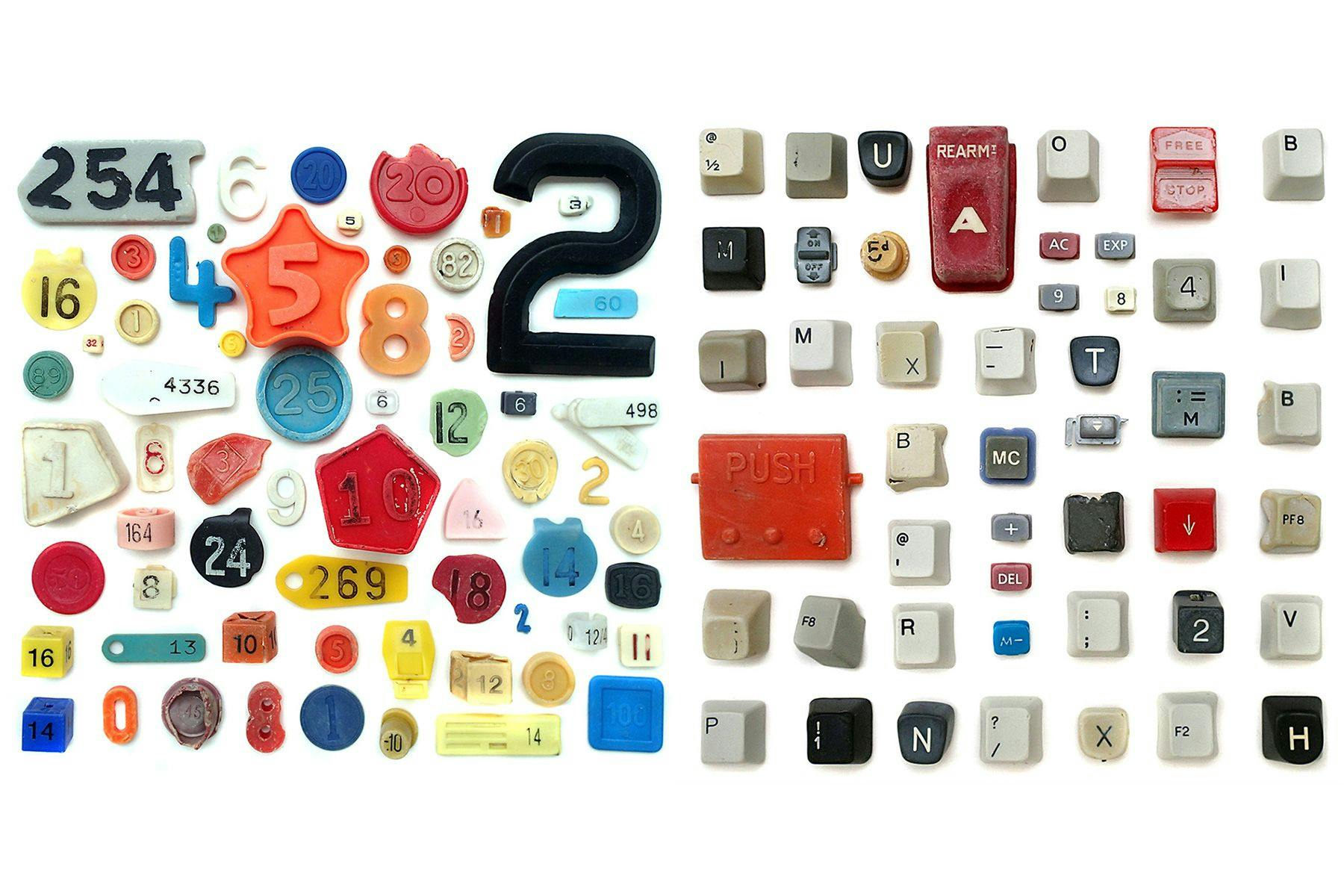
Artists are invariably involved with what they create on a personal level. In which way have you been involved with the marine environment and, consequently, the issue of marine plastic pollution?
I have lived on the coast for most of my life and grew up being able to see the ocean form my bedroom window. I now live a couple of hundred meters from the beach; I wake to the sound of gulls and when I step out of my home the sea air surrounds me. I cannot be away from the sea for long and feel slightly claustrophobic when I’m not. I have a deep passion for the marine environment and feel lovingly haunted by it – I am there as I sleep and hardly miss a day without seeing it. Curiously though, I am not a sailor and never have been interested in becoming one. Although you will find me at the beach swimming every day during the summer months, my love of the sea is mainly from a firm footing. The power and danger of the ocean is awe inspiring to me in the real sense of the word.
Over the years, I have worked with various marine conservation charities and organizations: I’ve designed products for Surfers Against Sewage, donated artworks to the Algalita Marine Foundation, talked to school children with the Marine Conservation Society, and championed a reduce, recycle, re-use ethos through talks and various publications and exhibitions.
When did your marine plastic project officially begin for you? Has there always been an angle you wanted to explore and/or message you wanted to transmit or did the idea just concretise overtime?
The beaches I visit and collect from are the beaches of my childhood; they are the beaches of teenage and adult years of wandering in thought; they have always been my sanctuary. The local geology is fascinating, with white chalk cliffs embedded with seams of flints and fossils. Thousands of years of constant wave action have carved the chalk into reefs where rock pools and shallow channels have been a constant source of attraction for me. Humans have inhabited these parts for centuries and one can easily spot the remnants of their adventures: Down the coast are stone age flint tools, skeletal wooden ship wrecks; nearer are expended WWII munitions, smugglers caves, ceramic pipes; even closer, the fragile white chalk coast is curtained in a concrete promenade, a brutal monument built to stop cliff erosion – man against nature.
For many years, out of obsession or for use in my work, I have collected treasures and artefacts from the shore line. After years of collecting, I felt I had enough fossils and natural objects, and my focus shifted to the plastic pieces that sat on sand in shame as representations of humanity’s wastefulness and over-consumption. Although I have been using plastic objects in my artworks for over 25 years, they did not become my prime material until around 2007. I had noticed the increasing amount of plastic pollution on my beach walks and thought that surely someone should do something about it; the next thought was that that someone should be me. I knew that if I collected more of the of debris I was observing on the beach I would do something with it. As I collected, cleaned and sorted the debris the ideas and work evolved.
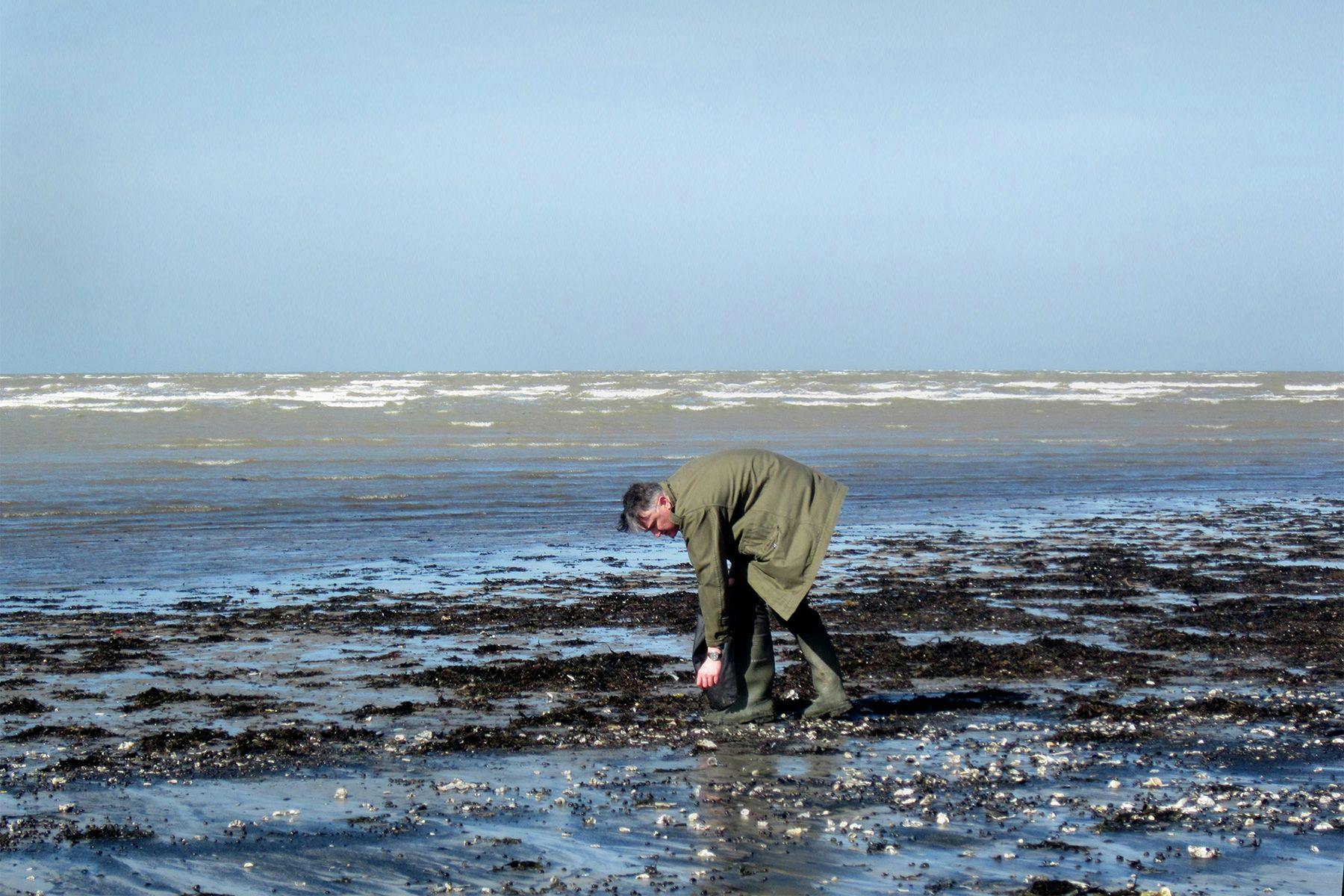
What is the process of transforming the plastic debris into an artwork?
I do not pick up everything I see – there is too much. My eyes scan the surface and I am selective: if I need a particular colour, the object is interesting by design or if it is recognizable, it will end up in my bag and be processed back at the studio. All my finds are washed and scrubbed with detergent then set out in the studio to dry naturally. I usually wait until I have a large sack of cleaned and dried plastic until the sorting process starts. Out of the jumble, piles of colours are created on my large studio table; recognizable objects, novelties and toys are put aside awaiting future sorting.
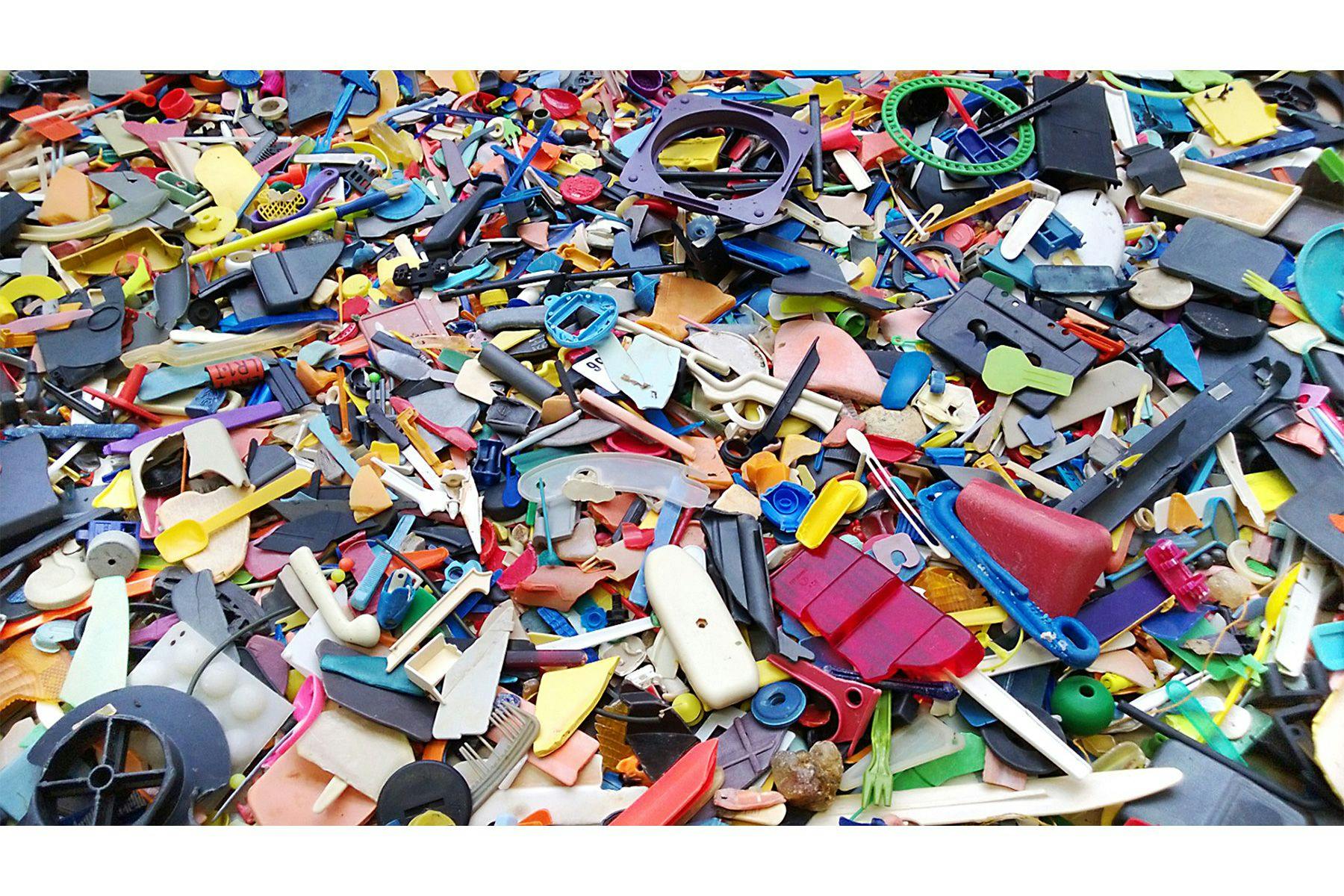
Due to my colour blindness, the sorting process is long, tedious and quite frustrating. I filter through the piles until what I have left is plastic whose colours I don’t recognize. These end up in my “Anomalies box.” If I have an artwork in mind – say a colour field piece such as Persistent inconsistencies, which uses solely pieces from my Anomalies collection – I take the boxes of colour and start fixing the pieces in place. There is no arrangement before adhesion; the decisions are taken as risks in a game – key pieces are positioned and others fill the spaces. Cutting or trimming is not allowed; I aim to keep a truth to the material and achieve a balance of composition and colour.
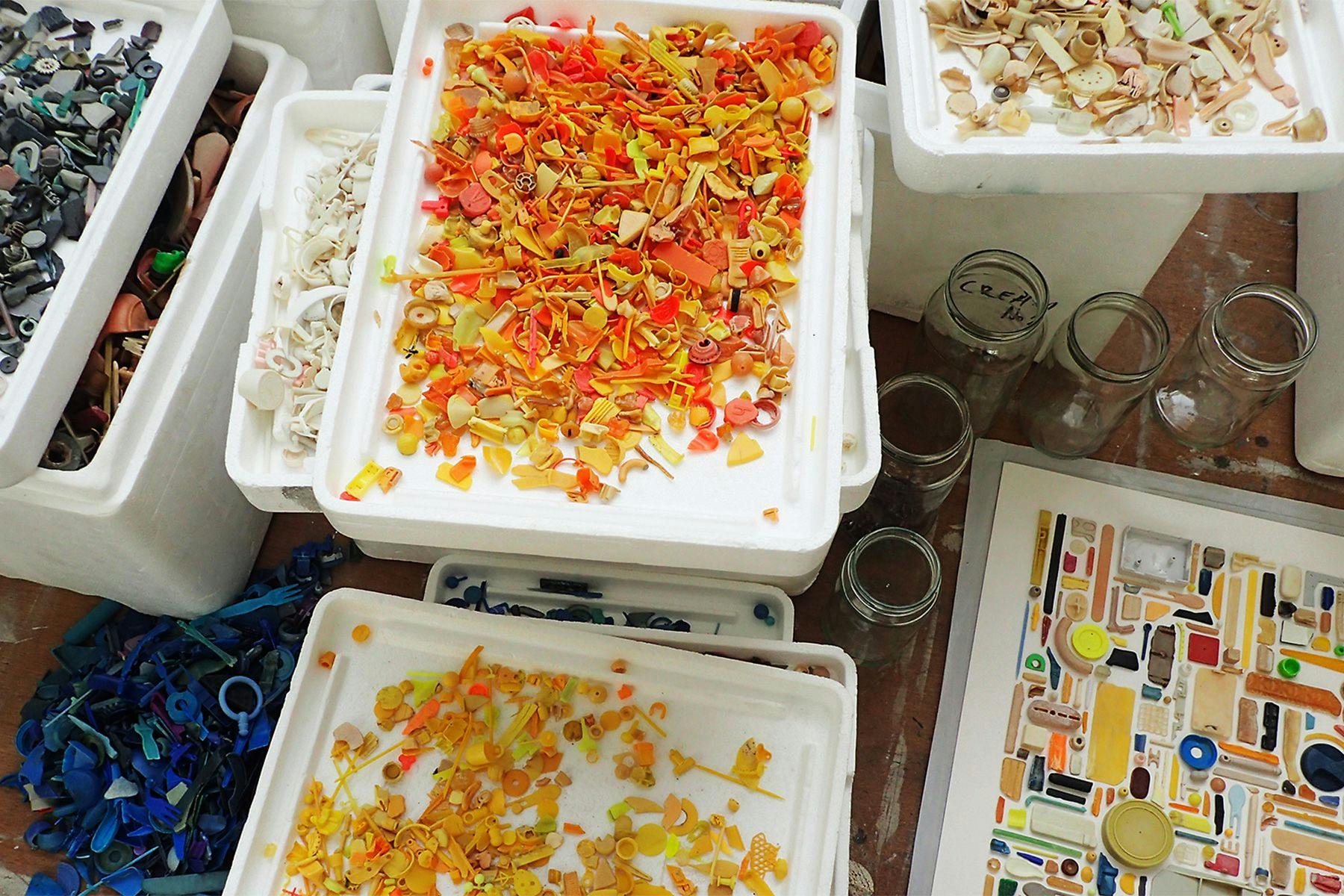
What was the most remarkable object you found? Conversely, what is the commonest thing to find?
Over the years, I have literally found thousands of interesting, mysterious, obvious, and unusual items. Some are completely out of place in the marine environment (I have found a couple of sex toys during my walks on the beach) but most are unidentifiable shards and broken fragments. I have bags of toy limbs, heads, tools, false teeth, fingernails, cars, aeroplanes, ships and boats, animals, chip forks, ice-cream spoons, hearts, stars, tags, signs, knifes, guns, bullets, furniture, horseshoes, skeleton pieces and more; all made from plastic, all miniature in size and all lost to their previous owners and out of memory. I find most of them remarkable in some way or another. One of my favourite pieces is a small poignant figure of a boy, clothed in shorts and blazer which, due to some underwater collision, had his head knocked sideways.
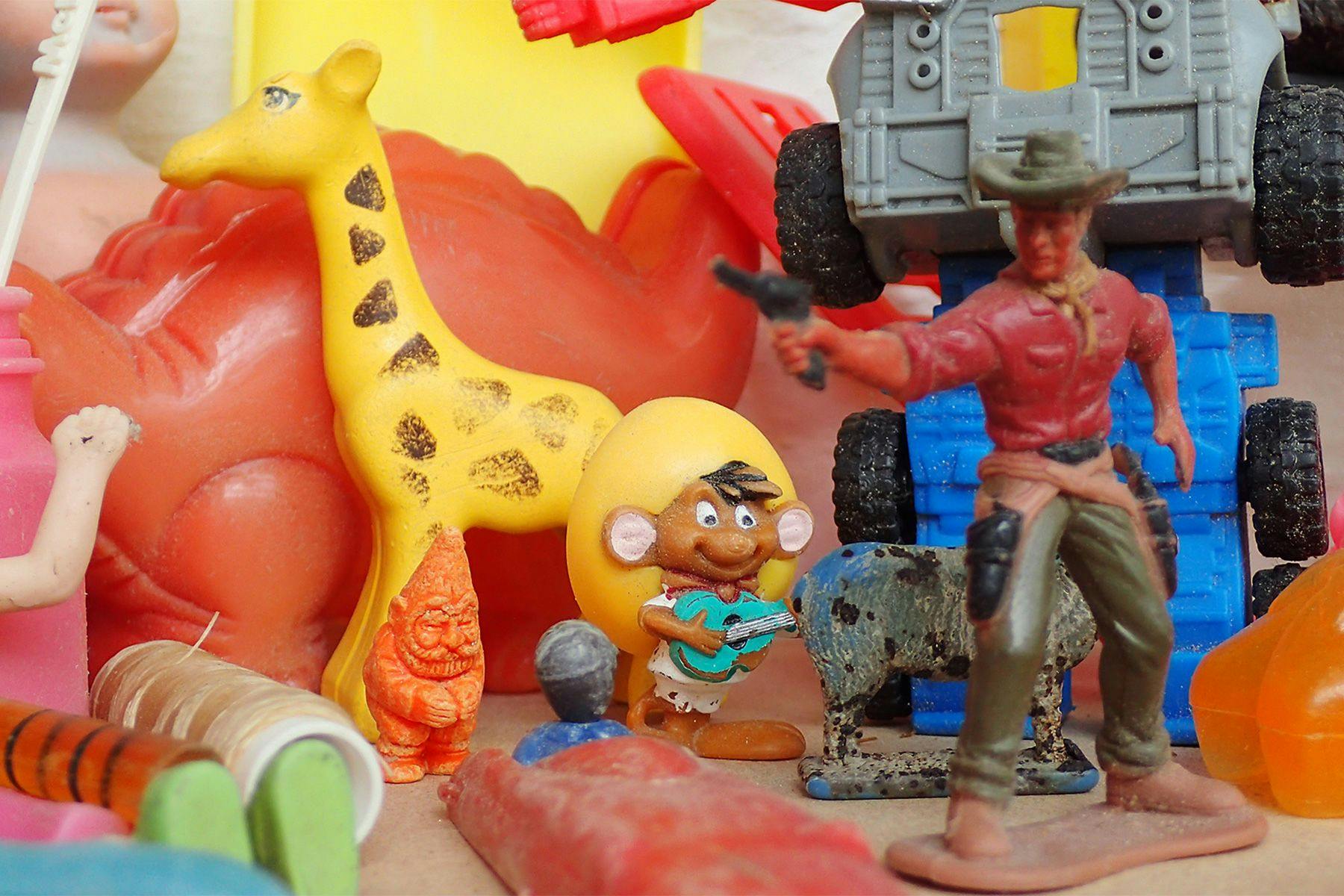
Have you ever come across something named or tagged and contacted the person/place where it came from?
Messages in bottles are something that I find maybe twice a year and if there is a contact number I always get in touch. A recent bottle led me to contact a school from the Netherlands; I corresponded with the teacher for a few months who shared with her students our discussions regarding my practice and plastic pollution in the North Sea.
Is there a particular story behind an object that you feel has struck you as an artist/person concerned with the environment?
In 2010, I found the remains of a plastic pint beaker laying on the seaweed. Pronouncing in its blue markings and logo “Stop Ocean Plastics – Working to reduce the amount of plastic in the marine environment,” along with its web address. As an organization it seems defunct and the only trace of them I can find was this sadly ironic object from the beach.
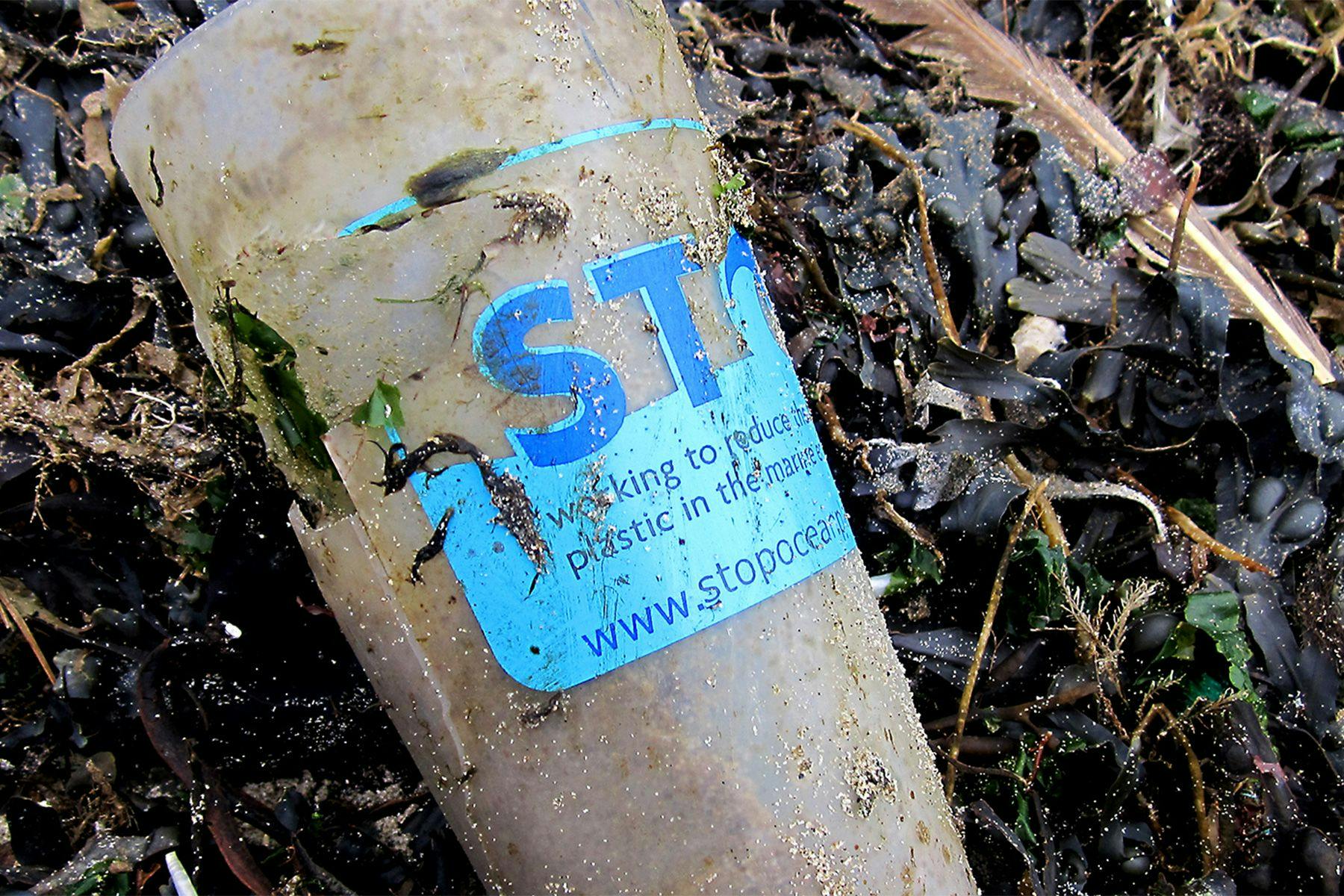
What are some changes you have witnessed in these past 20-odd years of collecting plastic off the beach?
Unfortunately, there has been a visible increase in the amounts of plastic over the years of collecting. This is inevitable and coincides with the increase in manufacturer of plastic items, our reliance on the materials, and our throwaway consumer habits. The objects I find really do mark time; there is an increasing amount of mobile phone parts and these are now becoming smart phone based rather than the earlier cellular phones available. Unlike a lot of beaches, I rarely find large plastic items and I feel that the objects I am picking up are getting smaller – something which may well be due to both lengths of time in the environment and crashing amongst the stones of the shore. But I still find early plastics like Bakerlite light fittings, toys from the 1950’s, camera film in a multitude of formats, and the inevitable ice cream spoons and chip forks by the dozen.
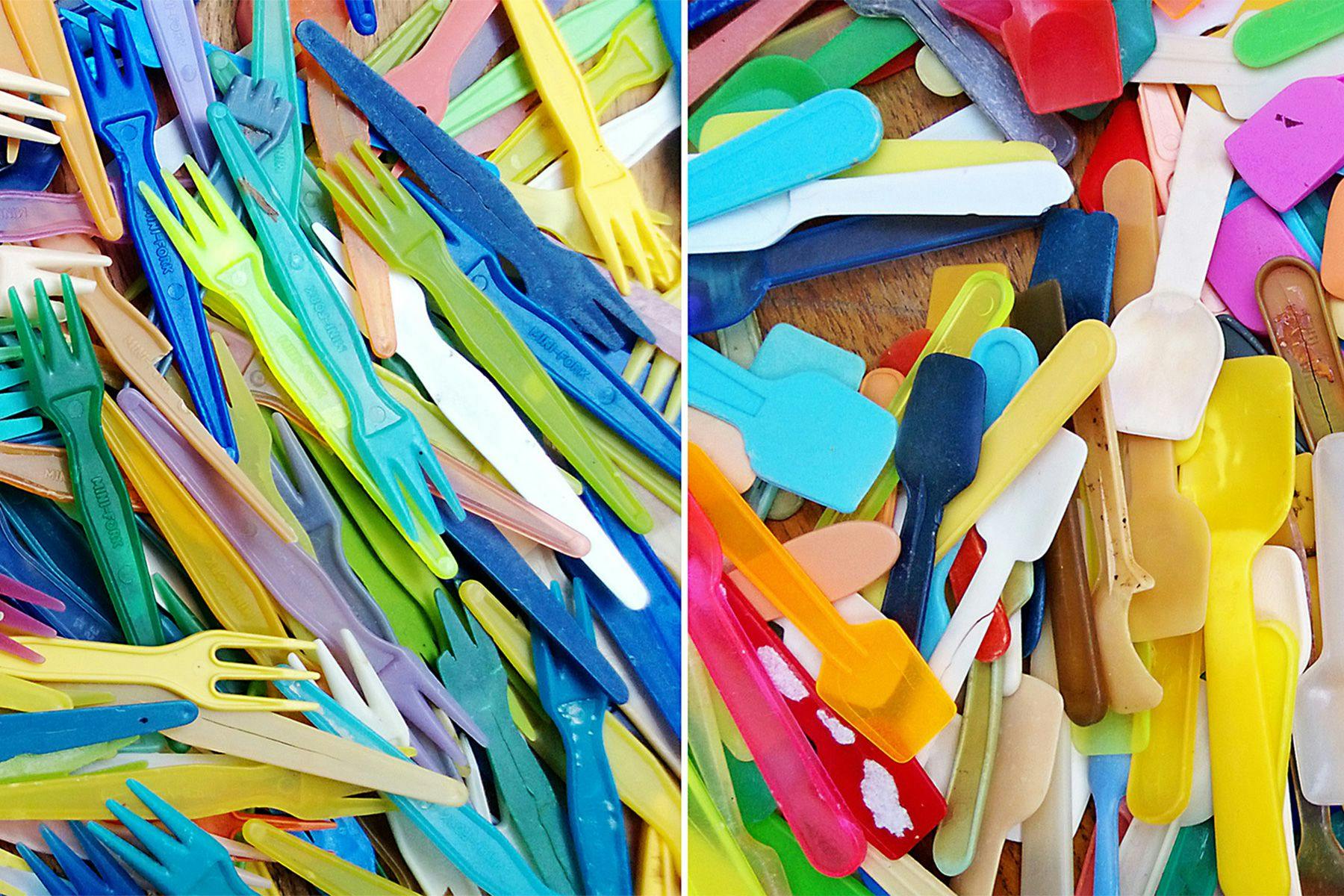
Very recently, due to the mass of press plastic pollution has rightly received, I increasingly witness other beach goers undertaking solitary beach cleans. While I applaud their intentions, I know that most – if not all – ends up in council waste bins in the promenades and paths that edge the beaches. I do congratulate these individuals on there concerns to action, but I regret that their bounty will only end up in landfill, transferring the problem from the marine environment to the land where leaching chemicals like BPA will poison the water course on its way back to the sea. Landfill is not the solution to the plastic problem and this needs to be part of the re-education of all citizens, councils, manufactures and retailers.
One of the features I like the most about your Marine Plastic project is when you translate climate data into infographics.
I have been intrigued by charts, diagrams and visual representations of data for many years, and have utilized the aesthetics in drawings and other works. Therefore, it wasn’t a great leap for me to start to create info-graphic works with the marine plastic project. When you are located in an area where the weather is dominated by the marine environment, and where tidal times affect how you live, data seems to be a constant preoccupation. When you can get to the beach and what conditions you will find are factors most beach combers have to consider. Hence, it seemed like a natural progression to use this environmental data combined with the material I was collecting it in.
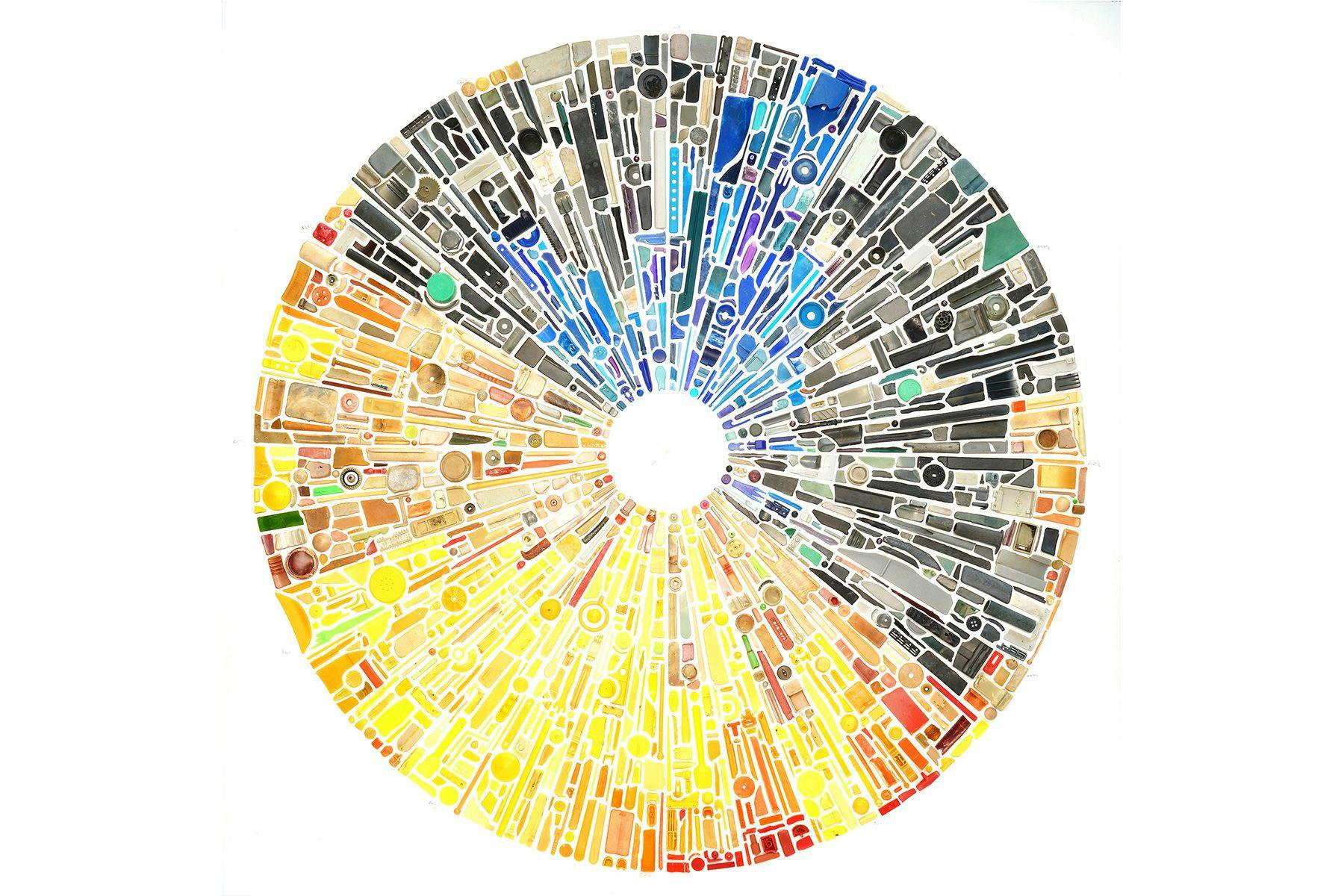
For a couple of years now, I have been using the mean temperature data of the UK – taken from statistics from the British Meteorological Office – to create info-graphics works. I colour code the temperature range from the coldest (blue) through to the hottest (red). The colour temperatures are based on my colour palette of collated debris; the circle is segmented based on the meteorological seasons which are filled with the corresponding coloured plastic based on the temperatures of each ten-day duration. In these works, the alchemical transformative process is more prominent, in that these plastic things of little or no value turn into things that have meaning and value again. Lost shards become representatives of data.
On my first glance over Matter and Common Anomalies Sample 1, I was struck by the image of a city seen from above – does that make sense? If not, was there any structure behind the way you positioned the objects or was it more an intuitive move?
I have in previous works been intrigued by maps and mapping so it is not surprising if this has transferred visually to the plastic works. Conceptually, the idea of a map to describe a landscape is something that really intrigues me and I love the visualization of on-the-ground data. I am further delighted, excited and influenced by Korzybskis statement from General Semantics that ‘The map is not the territory;’ that we blur models and representations of reality with reality.
With the colour field works like those you mention, the objects are positioned based on shape, size, and tone. My aim is to create a work where your eye can glide over the surface and be caught in one detail after another. Although, because of the factors above, some objects do seem to have a prominence – yet it is not my intention for one to stand out conceptually or have more value than the others. The moving of the eye across the surface of one of these works is a kind of echo of the process of finding the plastic objects on the surface of the shore: One scans the area and is pulled to something of intrigue, and for a small moment is lost in that one object of insignificance.
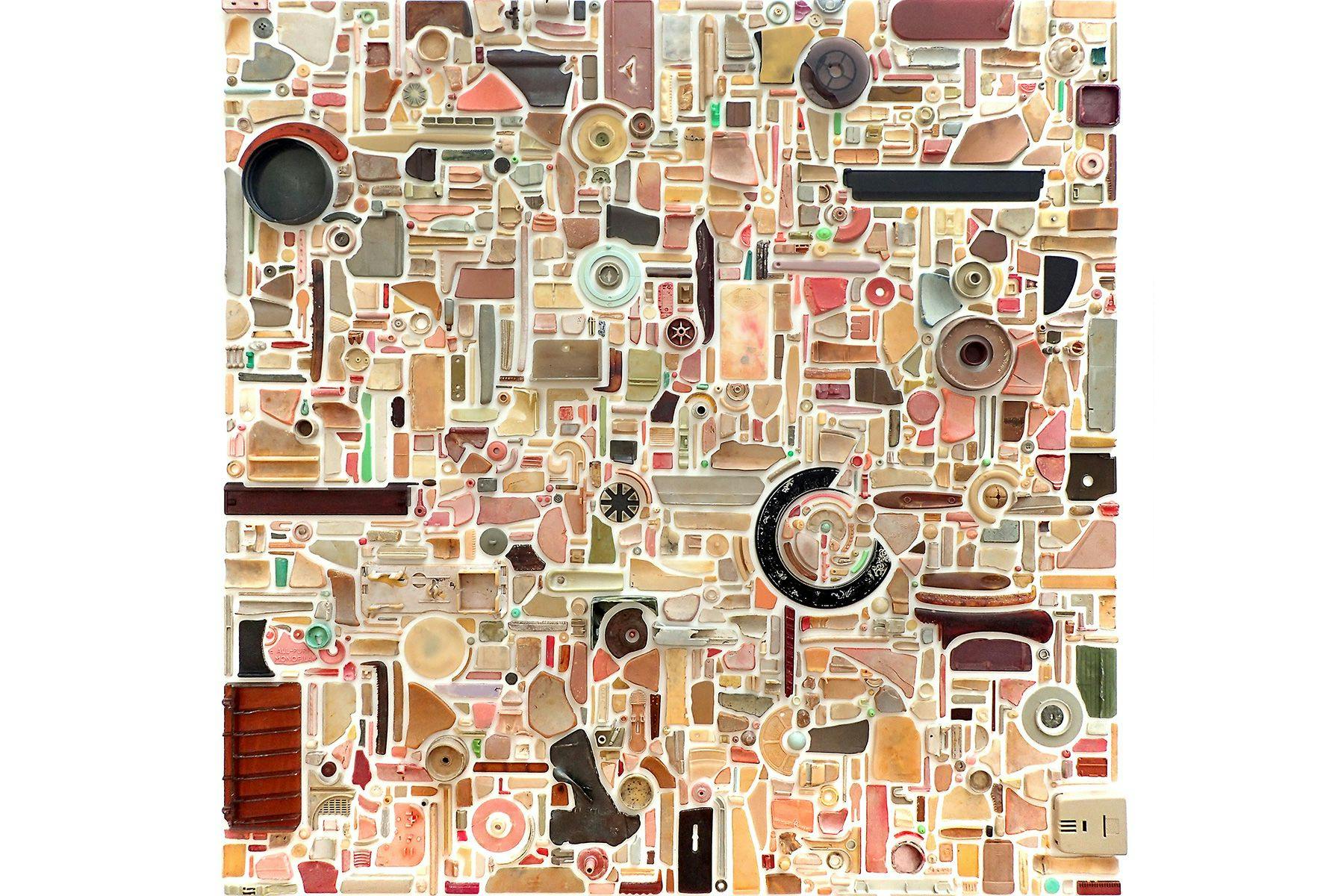
You’ve also extended your Marine Plastic project to become an ongoing, photographic installation – An Undesirable Archive – that has been exhibited in Europe and the USA.
This project was really born from a conversation I had with a suspicious gallery owner and a separate elderly lady when I exhibited my work in Brighton on the South coast of England. The gallery owner, a portly man with a Yorkshire accent, firmly stated that there was no way I found the objects on the beach; rather, that I brought old toys and plastic bits, and after smashing put them through a washing machine to soften the edge and to add age. The elderly lady, speaking in her middle-class accent, just couldn’t believe that the plastic was from British beaches of all things, and not foreign ones. These two separate incidents at the same show enraged me to take my camera along when I went collecting so as to prove in some small way that the objects were as I said and not some ecological dupe. I now have over 3000 images of mainly recognizable plastic objects in situ on the beaches where I found them. An archive of undesirable objects due to their location, yet desirable to me to record, capture and re-present.
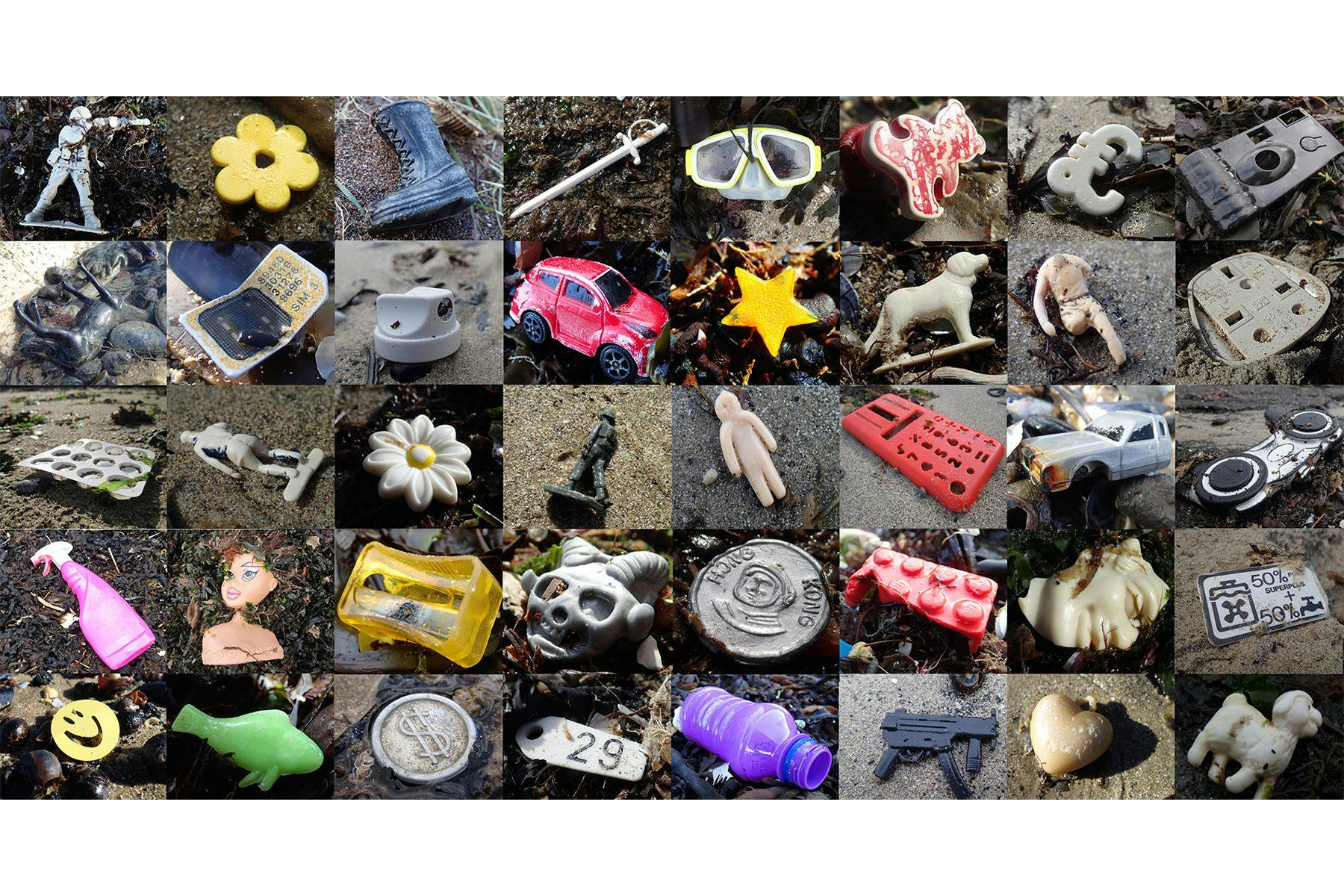
What are your thoughts about the future of plastic usage/pollution?
This global problem is present and our plastic legacy will be evident for hundreds, maybe thousands of years. We need to re-educate ourselves against the reliance we have on this material and against our general over-consumption and the convenience of a throwaway society. We need to make a stand with the designers, manufactures, and supermarkets to get them to change their own practices so there are no ends to products and packaging; so that what’s left or unwanted does not end up in landfill or the ocean. In other words, rid the problem by design and alternative materials, by educating consumers and helping them to buy with conscience.
In my most recent works, I started to create what one may describe as the artefacts of future archaeology, where I take a number of similarly coloured objects and use them to construct a new form (see Metaphorms, below). My intentions are to try to make small sculptures that have a familiarity that you can’t quite identify. These are very new works and I have yet had time to consider the many reasons why I have begun this new path. However, plastic will sit marking our geological time in the Earth’s seams for thousands of years. These new works ponder on what future archaeologists and museum curators will think of use, and how they will interpret and create the story of our collective history via the objects we keep and, ultimately, discard.
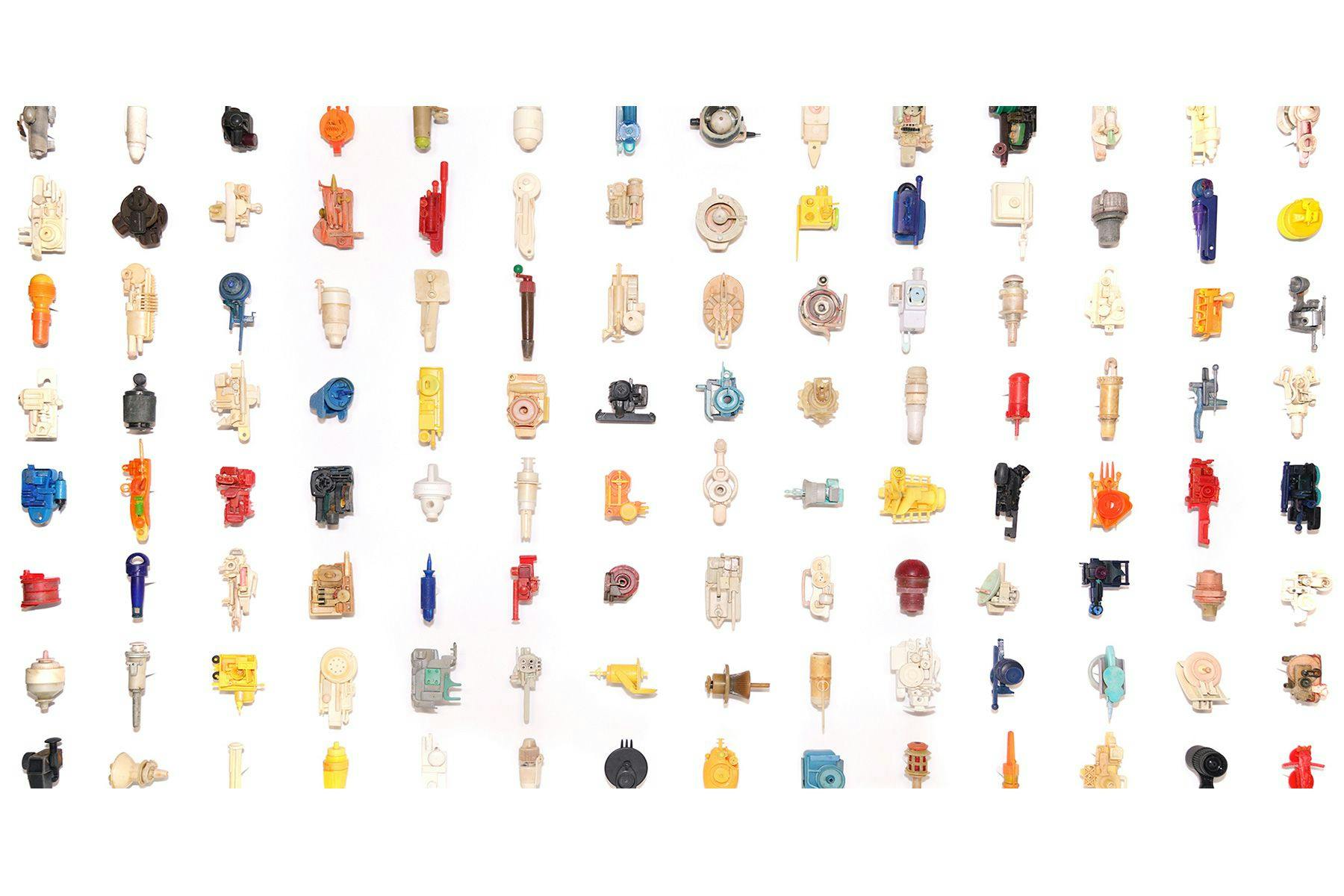
Any new projects or exhibitions coming up?
I have work in three art fairs in March 2019 – two in London, one in Brussels. There’s also an infographic piece which is on tour with the exhibition Plastic Entanglements: Ecology, Aesthetics, Materials, at Smith College Museum of Art, Northampton, Massachusetts until July 28th, 2019.
Find information and news on Steve’s blog www.fromherewhereyouare.co.uk or via Instagram @mcphersonsteve.